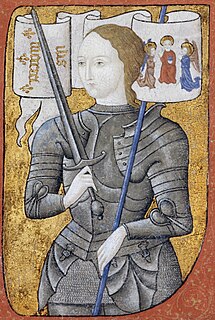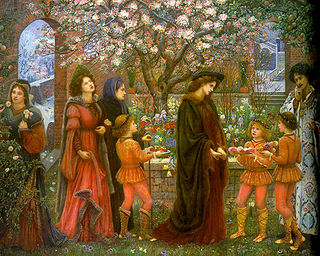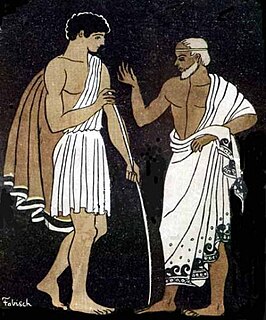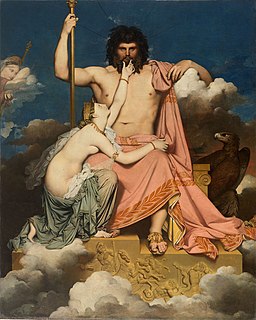 W
WJungian archetypes are defined as universal, archaic symbols and images that derive from the collective unconscious, as proposed by Carl Jung. They are the psychic counterpart of instinct. It is described as a kind of innate unspecific knowledge, derived from the sum total of human history, which prefigures and directs conscious behavior.
 W
WThe Apollonian and the Dionysian are philosophical and literary concepts represented by a dichotomy, or dialectic, between the figures of Apollo and Dionysus from Greek mythology. Its popularization is widely attributed to the work The Birth of Tragedy by Friedrich Nietzsche, though the terms had already been in use prior to this, such as in the writings of poet Friedrich Hölderlin, historian Johann Joachim Winckelmann, and others. The word Dionysian occurs as early as 1608 in Edward Topsell’s zoological treatise, The History of Serpents. The concept has since been widely invoked and discussed within Western philosophy and literature.
 W
WCollective unconscious refers to structures of the unconscious mind which are shared among beings of the same species. It is a term coined by Carl Jung. According to Jung, the human collective unconscious is populated by instincts, as well as by archetypes: universal symbols such as The Great Mother, the Wise Old Man, the Shadow, the Tower, Water, and the Tree of Life. Jung considered the collective unconscious to underpin and surround the unconscious mind, distinguishing it from the personal unconscious of Freudian psychoanalysis. He argued that the collective unconscious had profound influence on the lives of individuals, who lived out its symbols and clothed them in meaning through their experiences. The psychotherapeutic practice of analytical psychology revolves around examining the patient's relationship to the collective unconscious.
 W
WCoyote is a mythological character common to many cultures of the indigenous peoples of North America, based on the coyote animal. This character is usually male and is generally anthropomorphic, although he may have some coyote-like physical features such as fur, pointed ears, yellow eyes, a tail and claws. The myths and legends which include Coyote vary widely from culture to culture.
 W
WThe damsel-in-distress, persecuted maiden, or princess in jeopardy is a classic theme in world literature, art, film and video games, most notably in the more action-packed. This trope usually involves beautiful, innocent, or helpless young female leads, placed in a dire predicament by a villain, monster or alien, and who requires a male hero to achieve her rescue. After rescuing her, the hero often obtains her hand in marriage. Though she is usually human, she can also be of any other species, including fictional or folkloric species; and even divine figures such as an angel, spirit, or deity.
 W
WThe fox appears in the folklore of many cultures, but especially European and East Asian, as a figure of cunning, trickery, or a familiar animal possessed of magic powers. The fox is also sometimes associated with transformation. This folkore is found in literature, film, television, games, and music, and elsewhere.
 W
WA goddess is a female deity. Goddesses have been linked with virtues such as beauty, love, sexuality, motherhood, and fertility.
 W
WA hero is a real person or a main fictional character who, in the face of danger, combats adversity through feats of ingenuity, courage or strength. Like other formerly solely gender-specific terms, hero is often used to refer to any gender, though heroine only refers to female. The original hero type of classical epics did such things for the sake of glory and honor. On the other hand, are post-classical and modern heroes, who perform great deeds or selfless acts for the common good instead of the classical goal of wealth, pride, and fame. The antonym of a hero is a villain. Other terms associated with the concept of a hero, may include "good guy" or "white hat".
 W
WA jester, court jester, or fool, was historically an entertainer during the medieval and Renaissance eras who was a member of the household of a nobleman or a monarch employed to entertain guests. Jesters were also itinerant performers who entertained common folk at fairs and town markets. Jesters are also entertainers who perform at modern-day historically themed events.
 W
WA magician, also known as a mage, warlock, witch, wizard/wizardess, enchanter/enchantress, sorcerer/sorceress or spell caster, is someone who uses or practices magic derived from supernatural, occult, or arcane sources. Magicians are common figures in works of fantasy, such as fantasy literature and role-playing games, and enjoy a rich history in mythology, legends, fiction, and folklore.
 W
WA martyr is someone who suffers persecution and death for advocating, renouncing, refusing to renounce, or refusing to advocate a religious belief or cause as demanded by an external party. In the martyrdom narrative of the remembering community, this refusal to comply with the presented demands results in the punishment or execution of an actor by an alleged oppressor. Accordingly, the status of the 'martyr' can be considered a posthumous title as a reward for those who are considered worthy of the concept of martyrdom by the living, regardless of any attempts by the deceased to control how they will be remembered in advance. Insofar, the martyr is a relational figure of a society's boundary work that is produced by collective memory. Originally applied only to those who suffered for their religious beliefs, the term has come to be used in connection with people killed for a political cause.
 W
WIn the Odyssey, Mentor was the son of Alcimus. In his old age Mentor was a friend of Odysseus. When Odysseus left for the Trojan War, he placed Mentor and Eumaeus in charge of his son Telemachus, and of Odysseus' palace.
 W
WA mother goddess is a goddess who represents or is a personification of motherhood. When equated with the Earth or the natural world, such goddesses are sometimes referred to as Mother Earth or as the Earth Mother. The concept is complementary to a "Sky Father" or "Father Sky".
 W
WA scarecrow is a decoy or mannequin, often in the shape of a human. Humanoid scarecrows are usually dressed in old clothes and placed in open fields to discourage birds from disturbing and feeding on recently cast seed and growing crops. Scarecrows are used across the world by farmers, and are a notable symbol of farms and the countryside in popular culture.
 W
WThe Self in Jungian psychology is a dynamic concept which has undergone numerous modifications since it was first conceptualised as one of the Jungian archetypes.
 W
WIn Jungian psychology, the shadow is either an unconscious aspect of the personality that the conscious ego does not identify in itself; or the entirety of the unconscious, i.e., everything of which a person is not fully conscious. In short, the shadow is the unknown side.
 W
WIn comparative mythology, sky father is a term for a recurring concept in polytheistic religions of a sky god who is addressed as a "father", often the father of a pantheon and is often either reigning or former King of the Gods. The concept of "sky father" may also be taken to include Sun gods with similar characteristics, such as Ra. The concept is complementary to an "earth mother".
 W
WIn mythology and the study of folklore and religion, a trickster is a character in a story who exhibits a great degree of intellect or secret knowledge and uses it to play tricks or otherwise disobey normal rules and defy conventional behavior.
 W
WA warrior is a person specializing in combat or warfare, especially within the context of a tribal or clan-based warrior culture society that recognizes a separate warrior class or caste.
 W
WThe wise old man is an archetype as described by Carl Jung, as well as a classic literary figure, and may be seen as a stock character. The wise old man can be a profound philosopher distinguished for wisdom and sound judgment.
 W
WIn Jungian psychology, the Wise Old Woman and the Wise Old Man are archetypes of the collective unconscious.